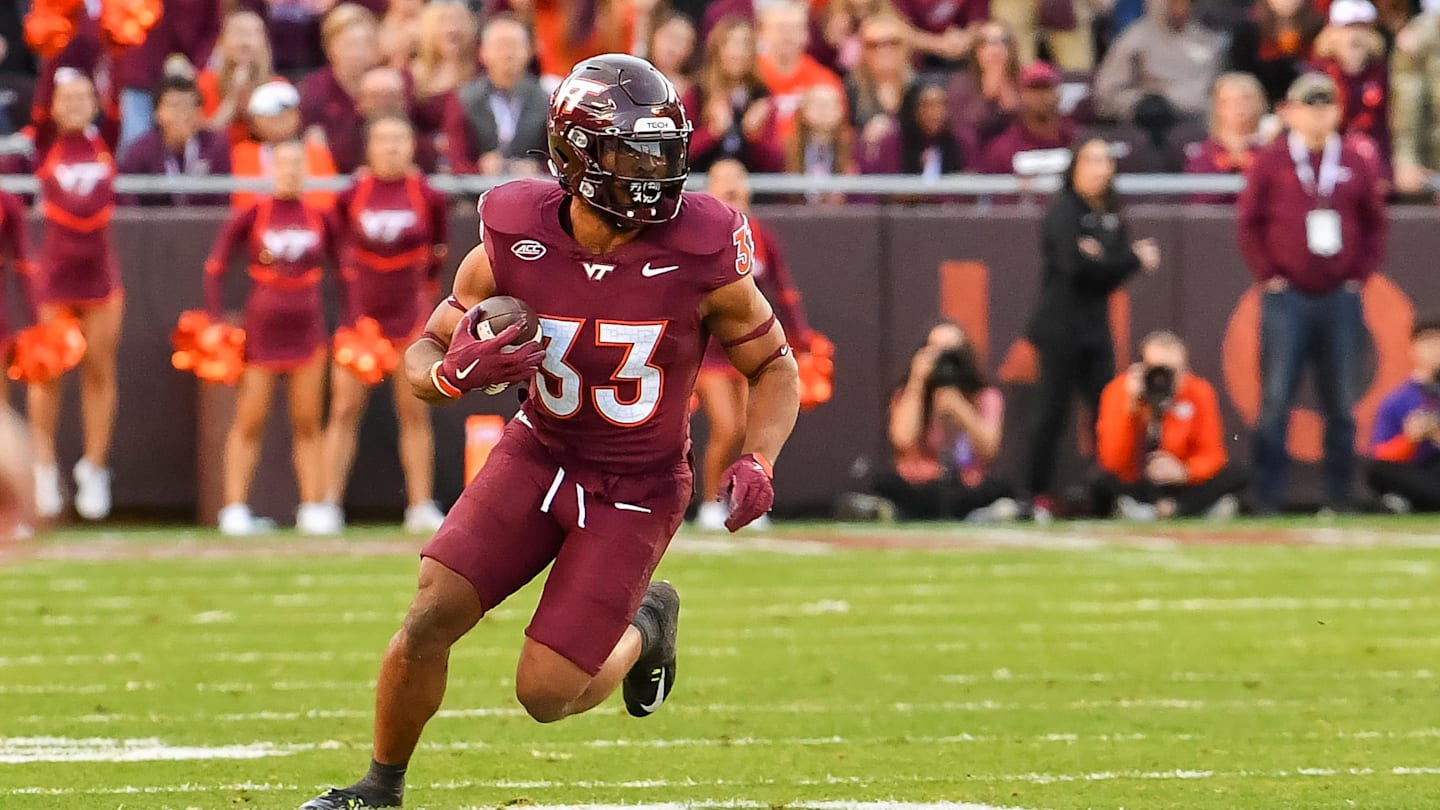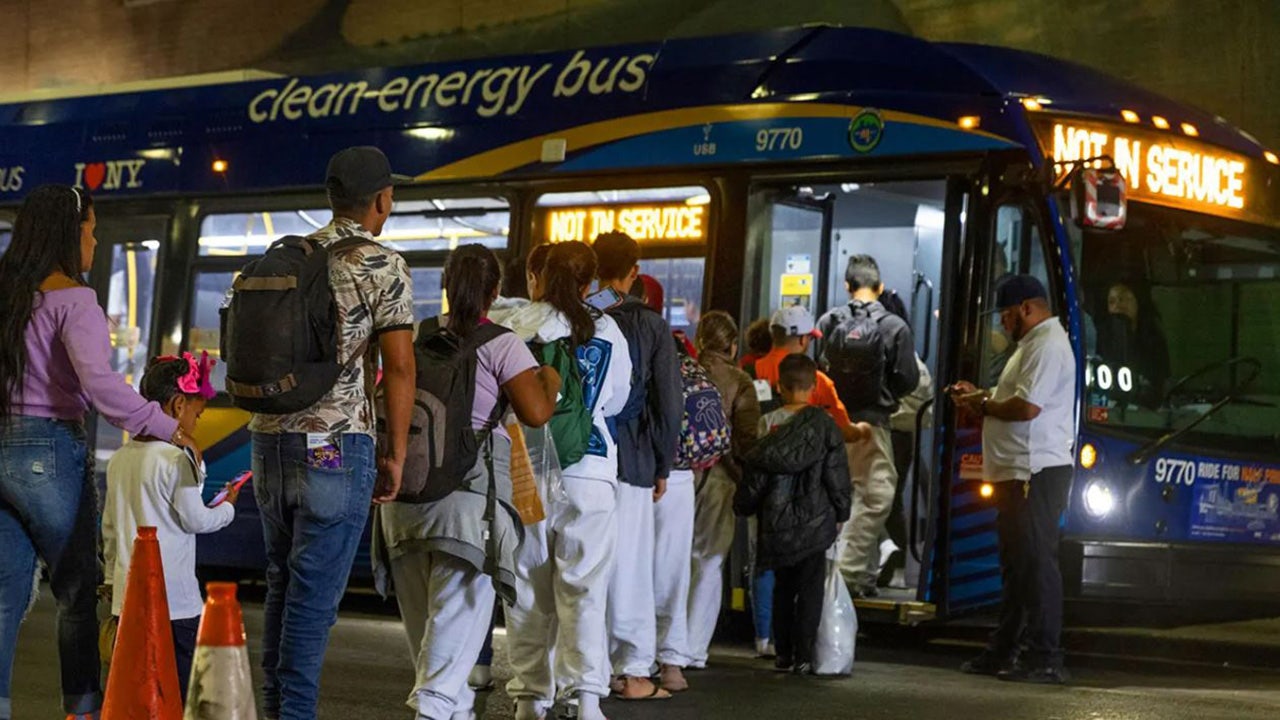Virginia school districts receive less funding per student than most neighboring states due to a complex and unreasonable funding formula that should be overhauled, according to a state report released this week.
Virginia
Virginia underfunds K-12 education with flawed formula, report finds

The findings became immediate policy fodder for education advocates and state leaders, including Gov. Glenn Youngkin (R), as state lawmakers continue to debate education funding and develop policies to attract and retain educators in Virginia.
The study found that the state’s Standards of Quality (SOQ) formula, used to calculate funding, did not account for students with higher needs, regional labor costs and school division size, leading to regularly underestimating the needs of schools. For example, in fiscal 2021, the formula calculated that school divisions needed $10.7 billion in state and local funding, but school districts actually spent $17.3 billion on operations, $6.6 billion more than the formula calculated.
Education advocates in the state have long noted that the SOQ formula was a problematic approach to school funding that leads to wide disparities in resources for students around the state. Advocates and school administrators saw the report — and its recommendations for reform — as a spotlight on the problem and a hopeful indicator of change.
“Virginia’s school funding model lags the nation and policymakers at the state level must seek practical solutions to assist our divisions whose localities cannot afford to fund the resources needed to provide students with a quality public education,” David R. Woodard, president of the Virginia School Boards Association, said in a statement.
Gov. Glenn Youngkin (R) used the findings to tout his own investments in education, including a proposed budget amendment of a $427.7 million increase in spending on public education. The proposed amendment did not pass the General Assembly this year after lawmakers could not reach a budget agreement, leaving money unspent. The Democratic-controlled state Senate had proposed adding about $1 billion to K-12 education, more than what the Republican-controlled House of Delegates proposed.
“Today’s report should serve as a wake-up call that our biggest problem and greatest opportunity is how we reform our system to drive dollars to improve student academic achievement, support our teachers, and deliver results to parents,” Youngkin said in a statement.
The complex SOQ formula has three main steps. First the formula determines the total number of staff positions needed for each school division, then calculates how much it will cost to fund that level of staffing. Finally, that total is divided between the state and local governments based on local ability to pay.
The staffing-based formula is a complex system that only eight other states in the country use. Most states instead use a student-based funding formula that allocates a specified amount of funding per student. The report found that the Virginia formula also regularly underestimated staffing needs. In fiscal 2021, the formula calculated that divisions needed 113,500 full-time staff, but the school districts employed more than 171,000 full-time staff. According to the report, between fiscal year 2019 and 2021, every school district in the state employed more staff than the SOQ formula calculated. And in interviews, school district administrators told JLARC that the state’s staffing standards were unrealistic.
“It’s a misnomer to call it the SOQ; it’s not quality at all”; one administrator told the committee. “If we just funded at SOQ level, it would be a catastrophe.”
Other pitfalls of the formula, the report found, include underestimating salary costs, not accounting for the volume of high-need students like those in special education programs and English learners, and not considering the challenges of small and rural school divisions that don’t have the same tax base for local funding as their larger counterparts.
The report also includes a number of policy recommendations to change the formula. Short-term changes include discontinuing a cap on the number of support staff the state will fund that was put in place during the Great Recession to save money; and factoring in additional funding for at-risk students.
One policy option suggested by JLARC would be to replace the entire staffing-based SOQ formula with a new student-based formula that is based on average school division expenditures.
“It very clearly shows two things. One is that we have drastically under invested in education for a long time. As we move forward, the second thing it shows is just how needed a reform of how the state funds education is,” Del. Schuyler T. VanValkenburg (D-Henrico), a public school teacher, said in an interview. “We really desperately need to be like some of the states that are on the cutting edge with reform and that’s not a partisan issue.”
Kristy Somerville-Midgette, superintendent of Brunswick County Public Schools and president of the Virginia Association of School Superintendents, said that the funding formula has long led to disparities in the way schools are funded. The model, she said, leaves small and rural districts with less funding.
She used a middle school with 400 students as an example. The state formula estimates that funding one counselor is enough to meet the school’s need, but Somerville-Midgette said it’s most likely not. A wealthier district might have enough local funding to hire a second counselor, but a small, rural district may not.
After the report was presented to lawmakers, Sen. Jeremy S. McPike, (D-Prince William), said the problem was apparent for families who’s children have attended schools with crowded classrooms.
“So this report is not surprising to this parent,” McPike said.
State Secretary of Education Aimee Rogstad Guidera and Superintendent of Public Instruction Lisa Coons wrote in a letter to JLARC director Hal Greer that the report highlights the need for significant reforms in order for increased investment to translate into better student outcomes.
“To meet our Constitutionally mandated goal of establishing and continually maintaining a high-quality education for all students, we must not only build off the historic investments made over the past two years, but reform our system to drive dollars into the classroom in a way that improves outcomes for our students,” they wrote.

Virginia
NBA Draft: West Virginia Duo Produce Big Numbers in Upset Over No. 3 Gonzaga

West Virginia got off to a hot start at the Bad Boy Mowers Battle 4 Atlantis by knocking off undefeated Gonzaga 86-78 in overtime in their first-round matchup. The Mountaineers have received strong performances to begin the season from two upperclassman transfers: Javon Small and Tucker DeVries.
With each player delivering standout performances, it’s time to start considering them seriously as draft prospects.
Let’s take a closer look at their outings in this big win and dive into their seasons as a whole up to this point.
Tucker DeVries finished this game with a stuffed stat line of 16 points, six rebounds, four assists, two steals and four blocks. This level of versatility clearly illustrates the type of player he is, as he looked solid in nearly every aspect of the game. He has good positional size at 6-foot-7 and plays with a very high IQ on both ends of the floor. His defensive impact was especially noticeable, as he consistently made impactful plays, including a steal that led to free throws to tie the game at the end of regulation. DeVries finished the second half on a 5-0 run, which gave West Virginia momentum to capture the game in overtime.
DeVries has had a solid all-around season leading up to this performance, averaging 13.5 points, 4.8 rebounds, two assists, 2.5 steals and 1.3 blocks, with shooting splits of 36.6%/40.7%/81.3%. If he were to be drafted following this season, it would likely be in the second round, but his versatile play style is very promising.
Javon Small led the Mountaineers in scoring during this upset victory, contributing 31 points on impressive shooting splits of 50%/40%/81.8%. In addition to his scoring, he also grabbed seven rebounds, dished out two assists and added one steal and one block. Small is a quick and slippery guard who stayed in attack mode throughout the game, translating well into fast-break opportunities. Rarely staying in one spot on offense, Small kept the floor spaced and forced his defender to fight through traffic to keep up with him. His offensive approach was patient as he waited for his defender to get off balance before attacking.
Before this game, Small had averaged 15.5 points, 3.3 rebounds, four assists and three steals. He leads the Mountaineers in points, assists, and steals, while providing a noticeable spark on a nightly basis. Small is now at his third school in four years, with similar statistics in each of his previous two seasons. As an older guard, it is not guaranteed that he will be drafted, but if this level of productivity continues throughout the season, he may receive an opportunity to prove himself at the next level.
Want to join the discussion? Like Draft Digest on Facebook and follow us on Twitter to stay up to date on all the latest NBA Draft news. You can also meet the team behind the coverage.
Virginia
Virginia Tech Football: Three Keys to Victory for the Hokies on Saturday vs Virginia

The rivalry matchup between Virginia Tech and Virginia is nearly 48 hours away and it is a big matchup for both teams. The Hokies and the Cavaliers are both 5-6 and needing a win to make a bowl game. The loser will be getting a headstart on 2025 instead of playing in the postseason.
At the start of the year, Virginia Tech was being talked about as one of the biggest surprise teams not just in the ACC, but in the country. This team’s biggest goals have gone away, but they still have an opportunity to reach a bowl game for the second straight season. That should still be a big deal to the program, but on the other side, the Cavaliers are trying to make a bowl game for the first time under Tony Elliott. They are going to be fired up about playing in this game and having a chance to make a bowl game, so Virginia Tech can’t take it for granted, no matter their past success vs Virginia.
So what are the keys to a win for Virginia Tech on Saturday?
Before you could even blink on Saturday night, Virginia Tech was trailing Duke 14-0 thanks to two long touchdown plays and the Blue Devils have not been a very explosive offense this season. Virginia has found a way to put points on teams like Clemson and Louisville this season and has improved since last year. The Hokies’ pass rush was non-existent on Saturday vs Duke, finishing with no sacks and being unable to disrupt Duke quarterback Maalik Murphy. They will have to be able to play better on Saturday if they want to avoid the upset.
It is still up in the air who is going to play quarterback for the Hokies on Saturday night, but whoever it is would benefit from a big game from one of the nation’s best running backs. Tuten had 84 yards on 19 carries last week, but Virginia Tech might need more than that on Saturday when the face the Cavaliers.
Our own RJ Schafer wrote this about the quarterbavck situation heading into Saturday’s game:
“Brent Pry listed both Kyron Drones and Collin Schlee as questionable ahead of the historic matchup. He added that both will practice, although very limited, and they could “just be watching” from the sidelines.
Coach Pry also added that Virginia Tech is preparing four quarterbacks to be ready to play this weekend, including Davi Belfort, a freshman quarterback from Brazil, a country which could begin to be the future of American college football.
Whoever plays this weekend is going to have to have to manage the game and not turn the ball over. I think the offense is going rely on the run game heavily this weekend due to that.
Additional Links:
Virginia Tech Football Releases Depth Chart Ahead of Matchup Against Virginia
Virginia Tech Football: PFF Grades and Snap Counts For Every Player in Saturday’s Loss to Duke
Virginia Tech Football: Updated Bowl Projections For The Hokies Heading Into Final Game
Virginia
Big Tests On The Horizon For Virginia Tech Wrestling – FloWrestling

At 3-0 with marquee victories over #6 Missouri (23-10) and #21 Rutgers (26-11), as well as a second-place finish in the Keystone Open with just a handful of starters competing, Virginia Tech has swept through a tough November and is prepared for a difficult December.
The Hokies, #12 in Flo’s team tournament ratings but top 10 in various dual-meet rankings, are next scheduled for an annual trip to Las Vegas for the Cliff Keen Invitational, featuring 27 teams, of which 14 are among Flo’s top 25. And then it’s another trip west to Stillwater on Dec. 19 to challenge #5 Oklahoma State in a rare Thursday match.
The early key thus far for the Hokies has been the ability to win the bouts they’re supposed to win and grabbing a fair share of so-called toss-up bouts.
To wit, Tech’s #18 Sam Latona downing Missouri’s #13 Josh Edmond (4-2) at 141, or #25 Rafael Hipolito majoring the Tigers’ #32 James Conway (11-3) at 157 and #15 Jimmy Mullen stopping #20 Seth Nitzel (4-2) at heavyweight.
That trend continued at Tech’s Moss Arts Center match against #21 Rutgers when Latona used a late takedown to defeat Joey Olivieri 7-5, #4 Lennox Wolak pinned veteran Jackson Turley at 174 and #9 Andy Smith slipped past #17 John Poznanski 4-3 at 197.
Hokies coach Tony Robie only took a few regulars to the Keystone Open in Philadelphia and, led by championship efforts by #1-ranked Caleb Henson at 149 and heavyweight Hunter Catka, Tech placed second behind Lock Haven. Latona placed third at 141 and Sam Fisher did the same at 184.
Robie opted to use the Hokies’ roster as freshmen Dillon Campbell (125), Matt Henrich (157), Luke Robie (157) and Jack Bastarrika (133) competed as did redshirt juniors Jackson Spires (165) and Ty Finn (174). Spires placed second.
Who’s Ready For Change?
With legislation on the NCAA’s table affecting scholarship and roster limits — unlimited scholarships and a roster cap — as well as revenue sharing, some college wrestling programs likely have a serious dose of trepidation while others are confident they can deal with whatever happens.
Virginia Tech sits in the latter category.
“I have no concerns whatsoever about that,” Robie said earlier this month. “I think a lot of it probably will happen. It’s hard to say whether it’s good or bad for the sport; that’s not really for me to say. What I will say is you have to adjust with what the rules are and what the landscape of college athletics looks like, and that’s what we intend on doing.
“Is it good for the overall health of the sport of wrestling? The kid that’s the 35th kid on your roster? Probably not. But I think definitely there were probably some things that needed to change; the pendulum was starting to swing significantly the other way. At some point, it’ll probably start to go back to the middle.”
Robie said all anyone can do is wait for the final decisions.
“We have some contingency plans based on what we think is going to happen and we’ll move forward with our plan and try to execute it,” he said.
A Pretty Good Gig
Robie, in his eighth year as head coach, has been at Tech since 2006 and as each season passes, the commitment and enthusiasm remain the same.
“Well, you get to do what you like to do. And it’s a pretty cool thing to be able to coach wrestling for a living and be a part of a pretty good program, and work with some great people and try to affect the lives of the kids in your program,” he said.
“I think anybody would want to do that. For me, I’m not young anymore. I turned 50 … who knows how long I’m going to do it, but I’m going to give it the best I can while I’m doing it and hopefully continue to improve as a program and try to try to help these guys as much as possible. But it’s good, Virginia Tech’s a great place to work, it’s a great place to live. I’ve got a great staff and it makes my life pretty easy.”
-

 Science1 week ago
Science1 week agoTrump nominates Dr. Oz to head Medicare and Medicaid and help take on 'illness industrial complex'
-

 Health6 days ago
Health6 days agoHoliday gatherings can lead to stress eating: Try these 5 tips to control it
-

 Health3 days ago
Health3 days agoCheekyMD Offers Needle-Free GLP-1s | Woman's World
-

 Science3 days ago
Science3 days agoDespite warnings from bird flu experts, it's business as usual in California dairy country
-

 Technology2 days ago
Technology2 days agoLost access? Here’s how to reclaim your Facebook account
-

 Science1 week ago
Science1 week agoAlameda County child believed to be latest case of bird flu; source unknown
-

 Sports1 week ago
Sports1 week agoBehind Comcast's big TV deal: a bleak picture for once mighty cable industry
-

 Entertainment1 day ago
Entertainment1 day agoReview: A tense household becomes a metaphor for Iran's divisions in 'The Seed of the Sacred Fig'



/cdn.vox-cdn.com/uploads/chorus_asset/file/25623076/247270_Apple_watch_series_10_AKrales_0557.jpg)










